4 DAY PRIVATE CUBA TOUR
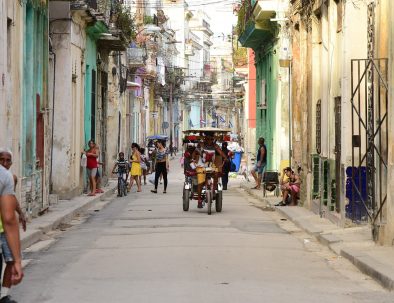
Experience the Real Cuba with Locally Sourced Cuba Tours
Below is a great example of the type of itinerary you can follow if you have 14 days in Cuba. However, our specialty and strength as an organization is creating tailor- made private Cuba Tour itineraries that focus on your interests and expectations.
If you have 14 Days/11Nights in Cuba we think this itinerary forms the base from which to structure your perfect Tailor-made Cuba tour experience. Please note that we can be 100% flexible with the activities and accommodations included. We can tailor the itinerary to focus on your interests and budget. To make the very most of all that Cuba has to offer, its best to spend as much time on the Caribbean island as possible. Our 14 day private Cuba tour itinerary gives you enough time to experience the real, authentic, Cuba without rushing, and includes visits to many of the country’s most important and interesting destinations.
Based on your interests and expectations, we will hand select some of the best and most interesting activities for you to participate in, while in Cuba.
Your Private local English (and/or Spanish) speaking guide will be on hand to share their magical country with you.
We think you’ll love our choices of authentic, upgraded or superior B&B Style accommodation (Casa’s). These are family-run establishments unique to Cuba. There is also the option to upgrade to 4-5* hotels as well.
Where meals are included we aim to showcase the best of Cuban cuisine by frequenting the growing number of paladares (privately run restaurants). Where meals are not included, your guide and our Havana office team will be happy to make recommendations and reservations as required.
All transport on our 14 day private Cuba tour is via private air-conditioned vehicles and is included between tour destinations, as well as for activities and excursions in your itinerary that require transportation. Any extra transport requirements can be organised through your guide and paid for locally in Cuba.
Forget having to worry about how you’ll get from the airport to your accommodation and vice versa, we’ve got your airport transfers sorted on both arrival and departure.
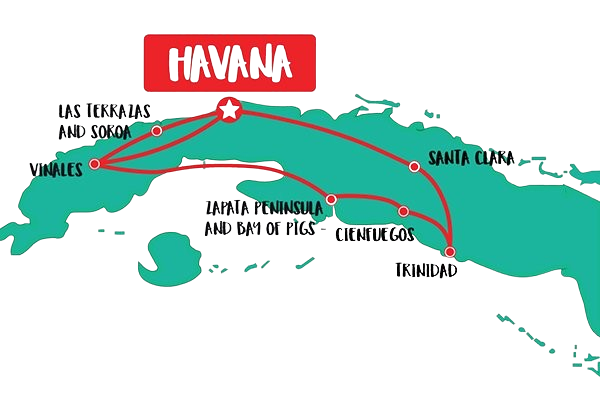
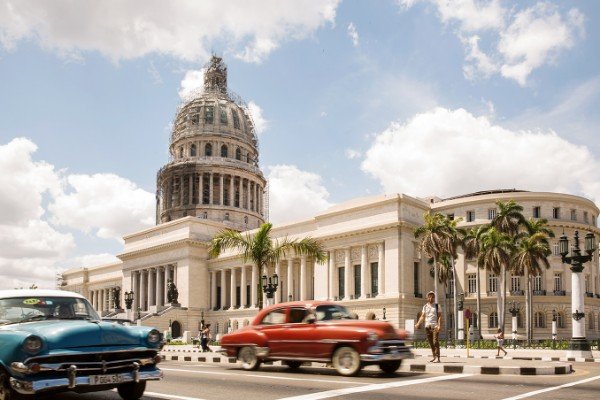
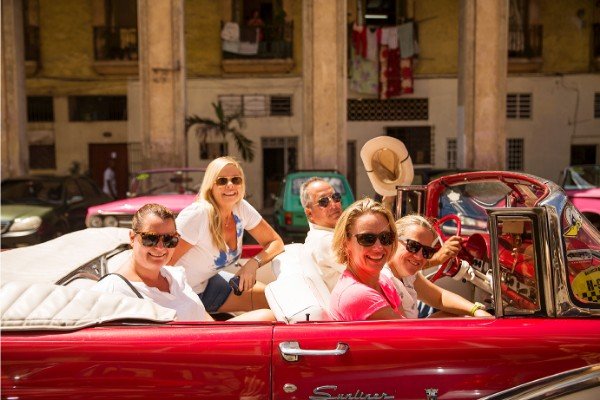
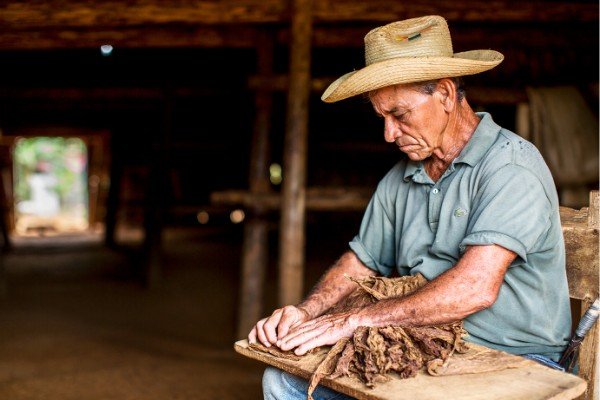


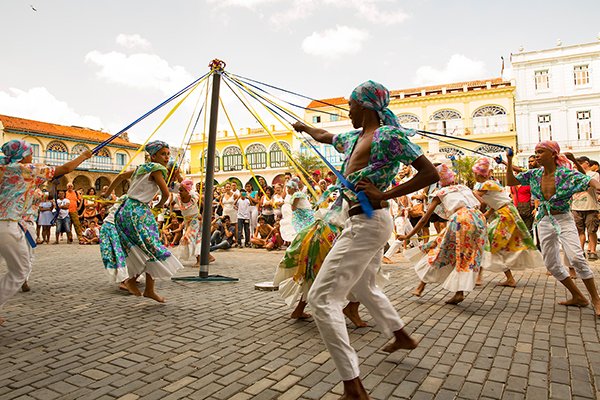
“Locally Sourced Cuba Tours is dedicated to providing you with an authentic and unforgettable Cuba tour experience. We can help you achieve in one adventure what has taken us years – to go inside the country in a deeper, more personal way. With Locally Sourced Cuba Tours you will have unrivalled access to local people from all walks of life while you experience an island that simply has so much to offer. Our tours are focused on introducing you to the Cuba that we know and love. You will spend time getting to know the locals, immersing yourself in Cuban culture, and supporting the Cuban people through your responsible tourism efforts.”
A Tailor-made 14 day private Cuba tour gives the right balance of informative cultural experiences and periods of relaxation. You can choose to have the freedom to explore on your own without missing out on vital sights of interest. Being a private tour means you’ll never feel lost in the crowd as your private local Cuban guide shows you around at a pace suitable to your fitness levels.
Cuba is the Caribbean’s largest nation, and our 14 day private Cuba tour aims to show you as much of the island as possible. However, we will never rush you, and longer journeys between destinations will include stops for a bit to eat or to stretch your legs and take in your beautiful surroundings. The sorts of travel times you can expect on the 14 day private Cuba tour are:
For those traveling to Cuba from the U.S. (regardless of nationality), please note that our intention will be to create an itinerary that ensures your compliance with current U.S. travel restrictions (515.574 Support for the Cuban People). In addition to retaining your itinerary, please keep records of your booking receipt, airline receipt, and any supplemental insurance purchased. You should retain these copies for 5 years after your travel. Some of our travelers have been asked to furnish these upon application for Global Entry, Pre-Check, and other programs with TSA oversight.
Bienvenido!
Welcome to Cuba! Cuba has welcomed everyone from Christopher Columbus to Ernest Hemingway to its sunny shores, and we’re sure you’ll find your time on the island just as alluring. The capital boasts layer upon layer of history going back 500 years since the Spanish founded Havana during their several centuries of colonisation of the island as a whole. As a result, it is one of the finest places in the Americas with which to explore the region’s colonial history, both good and bad. But Havana is also synonymous with the more recent history of the Cuban Revolution and its aftermath, and its fair to say that you’re never far from reminders of this period when staying in the vibrant, life-loving streets of the Cuban capital.
Part of Havana’s charm is undoubtedly its time-warp feel. Gently crumbling baroque and neoclassical masterpieces dot much of Habana Vieja – Havana’s ancient UNESCO- listed Old Town – alongside the city’s iconic vintage taxi fleet, cigar-smoking grandma’s, and a way of life little changed since the early 1960s. Things are steadily changing in the Cuban capital, but while relations between the US and the Caribbean nation remain strained, it looks as those Havana will remain a world away from its near neighbour for some time to come.
So you’ll want plenty of time to explore Havana during your 14 day private Cuba tour, which starts as it means to go on. From your very first evening in Cuba you’ll start to get acquainted with the city, with an orientation tour around the area immediately around your accommodation. Here you’ll find a very different Cuba than you might imagine from the news headlines, with live music a way of life, bright clothing the norm rather than the exception, and photographic opportunities on every street corner.
Your 14 day private Cuba tour begins, however, on your arrival at Havana’s José Martí International Airport, where you’ll be met for your airport transfer to your accommodation in the city. During these first hours of your Cuba tour, you will have the chance to meet your guide and discuss the finer details of your 14 day private Cuba tour itinerary before they escort you on the orientation walk of the local area (dependent on your arrival time).
A NOTE ABOUT YOUR EVENINGS IN CUBA
Evenings are generally free time, allowing you to explore at your latest Cuban destination at leisure. If you want some ideas of what you can do in the evenings, your guide will have plenty of ideas, and will be more than happy to organise tickets or reservations, or even accompany you out should you prefer.
On your first night in Cuba you might like to visit Casa de la Musica, a live music venue in the suburb of Miramar. There are many places in Cuba called the “House of Music”, but the Miramar House of Music is one of the liveliest, with an atmosphere that manages to be both animated and sophisticated at the same time. Housed within a renovated old Havana mansion, a trip here blends together many of Cuba’s greatest assets.
INCLUDED
Day Two of your 14 day private Cuba tour provides an entire day in which to take in many of Havana’s most important sights. At the very heart of the capital for centuries is Old Havana (Habana Vieja), a stunning UNESCO World Heritage Site which you’ll explore on foot during your guided Old Havana Walking Tour.
There’s an abundance of cultural riches to marvel at as part of this tour, and as you tackle the cobbles in this part of town, you’ll be told some of the history of buildings such as the El Capitolio, the Museo de la Revolución, and the Gran Teatro Habana. You’ll also take in some of the most stunning squares in the Americas – including the Plaza de Armas, Plaza de la Catedral, and Plaza Vieja, public spaces that are simply perfect for people watching.
Rest assured, there will be plenty of time to give your feet a rest, including during lunch at an authentic Cuban Paladar, one of the growing number of small privately-run restaurants which offer fantastic Cuban hospitality and tasty authentic island cuisine.
This afternoon you might like to explore slightly further afield in the Cuban capital on a Convertible Classic Car Tour. An iconic part of the Havana landscape, these vehicles date back to pre-revolutionary days and are kept running out of practically as much as the style they bring to the streets. Working taxis, your classic car will transport you to the newer districts of Havana Vedado and the faded grandeur of Miramar, passing the Colon Cemetery, Revolution Square, and the Malecon as you do so.
You might like to finish the day, making a stop at the Hotel Nacional in Havana Vedado for a drink and a wonderful view of the Malecon in time for sunset. Or you might choose to take to the dance floor for a Salsa Lesson suitable for all levels and led by an experienced dance teacher to learn some of the key moves in Cuba’s traditional dances – danzon, son, cha cha cha, and rumba among them.
In the evening you will have some free time to make the most of Havana’s lively nightlife. You can choose to do this independently, or your local guide will be available to host you. Your local guide will be able to recommend a range of options and organise tickets and transfers (paid for locally).
You remain in Havana for day three of your 14 day private Cuba tour.
This morning you might like to visit the Havana Rum Museum, giving you the chance to learn about the rum making process from beginning to end, and even enjoy some tastings, all within the stately surrounds of this converted old palace.
Another option is the Partagas Cigar Factory to uncover the mystique behind cigar making, allowing you to gain a sense of the significance of these beauties to the country’s culture and heritage. You will also witness first hand the amount of effort, care and tradition that goes into making these Cuban treasures, and come away with a new appreciation for Cuban cigars even if you’re a non-smoker.
How about a authentic Cooking Class in a local casa particular bed and breakfast. Not only will you get to taste some wonderful cuisine, but also interact with ordinary Cubans with a wonderful backdrop over the rooftops of the city.
It’s not difficult to be enraptured by the exhibits in Havana’s Museum of the Revolution, housed within a grand building that was once the country’s equivalent of the White House. This all changed after the dictatorial government of Batista was overthrown by Fidel Castro in 1959. It became the home of the Government and the Council of Ministers until 1965, and then the Central Committee of the Communist Party of Cuba. In 1974, it was converted into the museum, being awarded national monument status in 2010.
Equally enthralling is the Museo Nacional de Bellas Artes (Arte Cubano). Dedicated exclusively to displaying Cuban artworks, this gallery is where the crème de la crème of Cuban art is to be found. The works are displayed in chronological order starting on the third floor, making it superbly easy to observe the development of Cuban art throughout the centuries. Amongst the artists featured are works by Guillermo Collazo, considered to be the first truly great Cuban artist. There are also works by Rafael Blanco, with his cartoon-like paintings and sketches; and Raúl Martínez, a master of 1960s Cuban pop art.
You might want to take the short drive to La Finca Vigía on the outskirts of Havana. This sprawling estate was the Cuban home of heavyweight American author Ernest Hemingway, where he wrote some of his most important novels. This tour also takes in Cojimar (14 kilometres from Havana), where Hemingway was inspired to write The Old Man and the Sea, and where you can see the statue of Hemingway funded by local Cubans themselves, and restaurant Las Terrazas, the preferred Cojimar hangout of the author and the late Captain of his boat (Pilar); Gregorio Fuentes.
The small psychedelic alleyway of Callejon de Hamel, where the Capital’s artist fraternity congregate. Its a wonderful place to experience day-to-day Cuban life, albeit with an artistic twist, since the art quite literally spills out of the studios and onto the street.
In the evening you will have free time to make the most of Havana’s lively nightlife. You can choose to do this independently, or your local guide will be available to host you. Your local guide will be able to recommend a range of options and organise tickets and transfers (paid for locally).
Another day to explore Havana’s lively street theatre.
Some optional activities you might be interested in, include:
Las Terrazas and Soroa are located in the beautiful surrounds of Pinar del Rio province. Incredibly, this region was once the hub of the island’s logging industry, but was brought back to its original lushness as the result of a project spearheaded by Fidel Castro himself in the 1960s. The restoration worked so well it’s now a UNESCO Biosphere Reserve.
Start the day visiting the fishing village of Jaimanitas, and this unassuming part of Havana that has been utterly transformed by the artist Jose Fuster. Fuster has made his home in Jaimanitas, and a great deal of the surrounding neighbourhood, into one giant artwork using tiles in mosaic form. This public art installation is lovingly known as Fusterlandia and has now spread to encompass more than 80 homes, all decorated with ornate murals and domes to reflect the personality of each of Fuster’s neighbours. Furster has also contributed a chess park with giant boards and tables, a theatre, and public swimming pools, so there’s plenty of time to enjoy the area. Continuing on to Las Terrazas Township you’ll be able to meet the friendly locals and to admire the pretty San Juan mountain stream. As you walk, you’ll have time to stop at the township’s many artist’s studios – the perfect places to find a unique souvenir to take back home.
Cafetal Buenavista is Cuba’s oldest (now partially restored) coffee plantation, built in 1801 by refugees from Haiti. Much of the property (such as the dormitories that housed the slaves who worked the plantation) is now in ruin, but this adds to its haunting quality. The Cafetal Buenavista can be seen on the Sendero las Delicias hike, which also takes in lush, green landscapes and bright, coloured houses before arriving at the small village of Soroa. Often referred to as The Gate to The Garden of Eden, this picturesque village is the starting point for many hikes to the soaring Sierra del Rosario.
In an effort to accentuate the natural beauty of the Soroa village, the Spanish landowner Thomás Felipe Camacho established some 700 different types of orchids to start an Orchid botanical garden, which is a wonderful landscape in which to spend an hour or so. You’ll want to save some time for Salto Arco Iris too however. This magnificent waterfall forms part of the Rio Manantiades as it cascades 22 metres into an enclosed pool which is the perfect spot for jumping in and cooling off.
For those feeling adventurous, there’s also the Zip-line Canopy Tour in Las Terrazas to consider. The Canopy Tour is a nearly 2km long aerial tour using steel cables to whiz above Las Terrazas’ fascinating scenery. Here, you will find highly trained personnel and professional equipment, although this activitiy is weather dependent, and can be paid for locally.
A private transfer to Vinales will bring the day to an end, but not before you’ve been taken to the Los Jazmines look-out point to admire Vinales and the Pinar del Rio province in all its splendour.
The landscape around Vinales is unique in Cuba due to its magotes – steep rounded hills that contrast the flat plains around them. A rich, fertile valley in Pinar del Rio province, this compact and authentic Cuban village is one of the most breathtaking spots in all of Cuba for many. In the heart of Cuba’s prime tobacco growing region, Viñales is deceptively industrious, and many of Cuba’s trademark cigars are made from tobacco that is grown here. Upon arrival you will have the chance to have a look around the township and experience the lively music and dance scene that Viñales excels in.
In case you were wondering if the town was a type of rural fantasy-fulfilment, allow us to set you straight. That farmer using an oxen and cart to transport his crops would be doing it with this method regardless of whether you were watching or not. Life simply moves at a slower pace here, and is unbothered and not particularly influenced by the modernity of the rest of the world… or the rest of Cuba, for that matter. The perfect opportunity to experience an authentic slice of Cuban rural life.
Walking is definitely one of the best ways in which to discover compact little Vinales, although a cycling or horseback tour of the Vinales township and surrounding farmlands is also an option. As you spend time in the Viñales Valley you will visit the many different plantations of the region, growing manioc, arrowroot, sweet potato, tobacco, tomato, banana, mango and pineapple. Crossing small private farms, you can see the farmers working with their oxen and their traditional methods of cultivation. You’ll also have the opportunity to taste delicious sugar cane juice mixed with grapefruit juice, known as guaratón.
You might choose to have lunch at an organic farm with stunning views of your surroundings. El Paraiso is a slice of paradise in the Valley of Silence, and incorporates family-run restaurant owned by Wilfredo and his daughters.
Continue four kilometres west of Viñales, to admire the Mural de la Prehistoria, a 120 metre long painting designed in 1961 by Leovigildo González Morillo, a follower of Mexican artist Diego Rivera. On a cliff at the foot of the 617 metre high Sierra de Viñales, the highest portion of the Sierra de los Órganos, this massive mural took 18 people and incredible four years to complete. The huge, brightly-painted snail, dinosaurs, sea monsters and humans on the cliff symbolize the theory of evolution and are either impressively psychedelic or a travesty for the beautiful landscape, depending on your point of view.
If you love cigars or are interested in Cuban agriculture, we recommend a visit to a tobacco plantation, where the process of harvesting and drying the leaves in a secadero (drying house) will be explained.
In the evenings it’s time to enjoy Vinales’ limited but lively nightlife. Vinales’ tranquil natural beauty sits comfortably alongside a lively and jaunty nightlife, which will surely make your stay in Viñales a memorable one. You can choose to explore in the evenings independently, or your local guide will be available to host you. Your local guide will be able to recommend a range of options and organise tickets and transfers (paid for locally).
You’re 14 day private Cuba tour today takes you to Cienfuegos and the Bay of Pigs, the first a beautiful French built city and the second infamous for the failed CIA-backed counter-revolution designed to force Fidel Castro from power, but also a magical water world for swimming and snorkelling.
The sandy arc of Playa Girón and Playa Larga nestle peacefully on the eastern side of the infamous Bahía de Cochinos (Bay of Pigs), backed by one of those gloriously old- fashioned Cuban villages where everyone knows everyone else. Notorious as the place where the Cold War almost got hot, the beach is actually named for a French pirate, Gilbert Girón, who met his end here by decapitation in the early 1600s at the hands of embittered locals. In April 1961 it was the scene of another botched raid, the ill-fated, CIA-sponsored invasion that tried to land on these remote sandy beaches in one of modern history’s classic David-and-Goliath struggles. Lest we forget, there are still plenty of propaganda-spouting billboards dotted around rehashing past glories.
These days Girón, with its clear Caribbean waters, precipitous offshore drop-off and multitude of private home-stays, is one of the best places in Cuba to go snorkelling and diving. There is also the local Girón Museum to visit that tells of the history of the region and its importance in recent Cuban history.
After some time spend exploring the Zapata Peninsula, it’s time to make your way to Cienfuegos.
While Cuba is synonymous with colonisation by the Spanish crown, its little known that the island also saw colonisation by other European powers, including France. Cienfuegos is the result of this French colonisation, with French subjects escaping the harsh conditions of other French territories including Louisiana to a new life on the island. Noticeable different to Cuba’s other major city’s as a result, Cienfuegos exudes a definite Parisian air, in its wide boulevards, parkland, and architectural style. Its little wonder the city is also called ‘the Paris of the Caribbean’.
You’ll experience this for yourself with your guide, as you explore the wide streets and promenades, visit Parque Jose Marti and enjoy a walk along the city’s own version of the Malecón. It is in fact the longest promenade on the island, and not to be confused with the Malecón which snakes along the waterfront in Havana. You also won’t want to miss the ostentatious structure of the Palacio de Valle, built in 1917. Used for varying purposes throughout its more than 100 years of existence, the Palacio de Valle is now an (aspiring) upscale restaurant with an inviting terrace bar.
Cienfuegos is also regularly referred to as La Perla del Sur (the Pearl of the South) and today this pearl is yours for the taking. Your guide will lead you on a Cienfuegos guided city walk before taking in the grand, crumbling architecture over a cocktail at the very impressive yacht club.
Amongst many other marvels, your walk will include observing the Terry Theatre, Catedral de Nuestra Señora de la Purísima Concepción (a church with supremely beautiful stained glass work), Ferrer ́s Palace, the former City Hall, and Cuba’s only triumphal arch. You will have plenty of time to walk along the boulevards and visit Punta Gorda (the aristocratic quarter of the city in the early 1900s), and Hotel Jagua too.
Next, you might like to visit the mountains of El Nicho, where you can hike through caves, take a dip in natural pools beneath waterfalls, and observe the mountain’s exotic native flora and fauna, or which the birdlife is particularly popular with bird watchers.
There are of course many optional activities to take advantage of, depending on your interests.
In the evening there is plenty to do when the sun goes down, if you don’t much feel like an early night. With just over 160,000 residents, Cienfuegos is a city, although not a bustling metropolis like Havana. There is a club in the city that was named in loving tribute of Benny Moré, but it might not be what you expect. El Benny Club is more of a cheesy disco (which is not without its charm) than a place to hear traditional Cuban music. You’re better off heading to the Cienfuegos Casa de la Musica (there is an identically named place in many Cuban cities and it’s a safe bet for a good night out) for something that feels more authentically Cuban. Which is not to say that cheesy disco music cannot be Cuban! And as always, please ask your guide if you need any tips about where to go for a fabulous night out.
Next on your 14 day private Cuba tour you will travel to Trinidad, the favourite destination for many a traveller to Cuba.
Trinidad was founded in 1514 by Diego Velázquez and is considered a jewel in Cuba because of its colonial architecture. The town is sublimely beautiful and (much like Havana’s Old Town) the area has been maintained as a result of its designation as a UNESCO World Heritage Site.
The city’s heyday was during the 1800s, when it was a popular place to live for the rich merchants who ran the nearby sugar plantations. Unfortunately, the labour used in these plantations was slave labour, and once slavery was abolished on the island the production of sugar was no longer a viable concern, and the sugar mills of the Valle de los Ingenios fell into ruins.
As you explore the Trinidad Township you will get to discover just what makes Trinidad so special, including Palacio Cantero, Canchanchara, Palacio Brunet, Plaza Mayor, Museo Romantico, and a pottery workshop among other sights. You will then undoubtedly come to understand why the term “living museum” is so often used to describe Trinidad. It really is like time has stood still here.
Your time in Trinidad could never be said to be complete without at least one evening sitting on the steps outside the open air Casa de la Musica. Every night the area beside the Cathedral in Plaza Mayor comes to life with a live salsa band. There is no cost (although tipping is generally encouraged), the drinks flow freely and inexpensively, and this all takes place under a beautiful, balmy, starry sky.
Over the next two days you will have the opportunity to explore Trinidad and its surroundings further.
One option is to visit the Valle de los Ingenios, which translates as the ‘Valley of the Sugar Mills’. It was here that the bulk of Cuba’s sugar production took place, although this came to an end around the time that slavery was outlawed in Cuba. There are dozens of old sugar mills from the 19th century, along with slave quarters and manor houses, all dotted throughout the valley, which gives you an idea of the scope of the sugar production that once took place in the valley. You’ll get to see Manaca Iznaga, an estate purchased in 1795 by Pedro Iznaga, who became rich by trafficking slaves. It’s both deeply interesting and somewhat unsettling. It wouldn’t be a valley without a border of mountains, and you might choose to venture into the rugged, impressive peaks of Topes de Collantes. They are part of the Sierra del Escambray mountain range, which run for some 90 kilometres, and are located just 20 kilometres from the centre of Trinidad. Whatever your levels of fitness and mobility, there is a way to explore the Topes de Collantes, including:
Another popular option is to visit Playa Ancón, and feel that magical white sand beneath your feet. One of the most beloved beaches in Cuba, and considered to be the best on the southern coast, Playa Ancon can be reached in less than 15 minutes in a car, although if you can muster the energy, you might want to ride a bike from Trinidad (which will take about 40 minutes, depending on your pedal power). Less developed than some of Cuba’s beach resorts, it has the feel of an authentic beachside village, while the nearby sleepy fishing village of Casilda, 6km south of Trinidad is also worth the visit.
Come evening, you can choose to sample the delights of Palenque de los Congos Reales. A must for rumba fans, this open patio on Trinidad’s music alley has an eclectic menu incorporating salsa, son (Cuban popular music) and trova (traditional poetic singing). The highlight, however, is the 10pm rumba drums with soulful African rhythms and energetic fire-eating dancers. You might also be perfectly content to simply sit in Trinidad’s main plaza and watch the city life unfold around you.
Today you will make your way back to Havana via Santa Clara as your 14 day private Cuba tour nears its end.
Given its role in Castro’s ultimate victory, it’s not surprising that there are many tributes to the Cuban Revolution in Santa Clara, and while it’s a troubled past, the events here are what cemented the success of the revolution and led the country to where it is today. Sometimes referred to as The City of the Heroic Guerrilla, while it’s not as visited as Havana or many better-known spots in the city, its place in modern Cuban history cannot be denied.
Contemporary Santa Clara is an important commercial hub and home to one of Cuba’s largest universities (giving the whole town a youthful and energetic vibe), but is probably best known as the resting place of Che Guevara. It was Che Guevara who led the revolutionary forces in that final victorious Battle of Santa Clara that saw President Batista flee the country.
Naturally then your first port of call should take you to the Che Guevara Mausoleum and Memorial, a structure built to honour and tell the story of perhaps Cuba’s most iconic adopted son (Guevara was born in Argentina). The Che Guevara Mausoleum and Memorial was originally intended as a memorial only, since El Che’s final resting place was still a mystery when it was constructed. He was executed in Bolivia in 1967 instigating revolutionary zeal there, and his body was placed in an unmarked grave beside a military landing strip, where it would remain for 30 years until it was rediscovered. It was only then that Guevara was returned to Cuba under the orders of Fidel Castro, and interred with great ceremony in the memorial that already bore his name. The memorial also includes an interesting museum, where you can learn about the vital role played by Guevara in the ultimate demise of dictator Batista and the rise of Fidel Castro, a turning point in the Cuban revolution.
You can also visit the Tren Blindado, a train full of arms that was attacked in the decisive moments of the Cuban Revolution by Guevara’s men, before traveling to the centre of Santa Clara for a panoramic walk of the city and then returning to Havana for the evening.
In the evening you will have some free time to make the most of Havana’s lively nightlife. You can choose to do this independently, or your local guide will be available to host you. Your local guide will be able to recommend a range of options and organise tickets and transfers (paid for locally).
We will organise your airport transfer to ensure you get to the airport in plenty of time for your flight home.
INCLUDED
This is just one example of the type of itinerary we can run if you have 14 Days in Cuba. Our speciality is creating tailor-made Cuba tour itineraries that focus on your interests and expectations. Please take the time to fill out our tailor-made Cuba tour enquiry form so we can capture important information about your accommodation expectations, interests and sleeping arrangements.

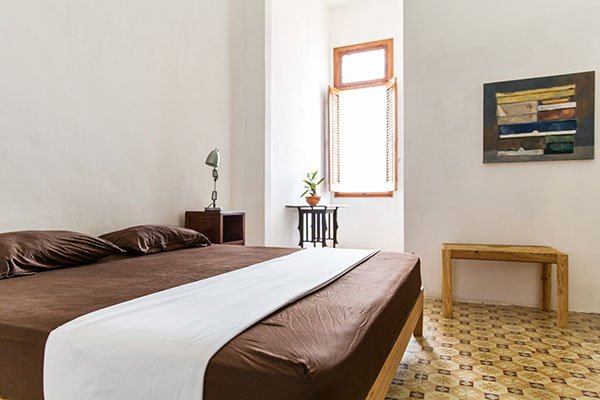
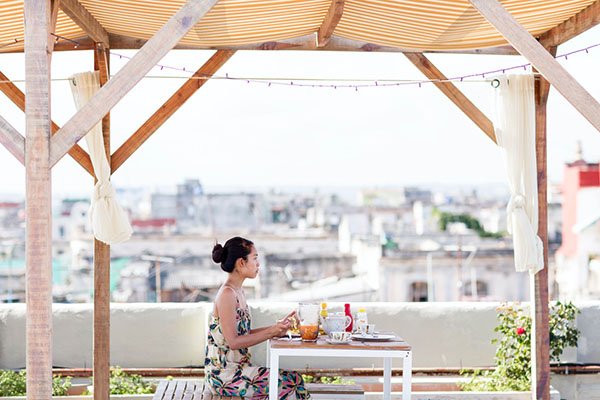
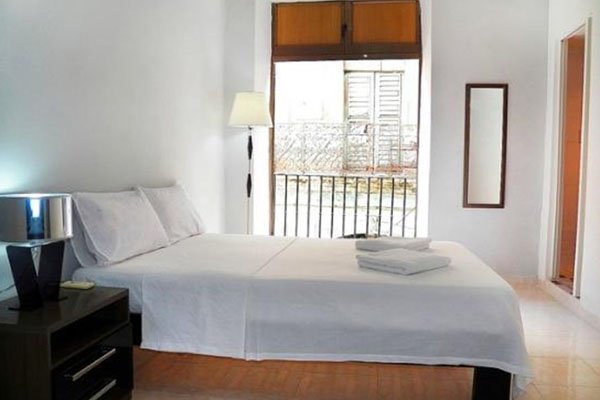


The B&B Style accommodation (Casa’s) we recommend for your time in Cuba offer a unique cultural experience. While they shouldn’t be compared to modern Western hotels, the rooms will have air-conditioning, private en suite facilities, hot and cold water and have generally been recently renovated to a beautiful standard. Cuba’s accommodation is very special. Until recent regulatory changes, it wasn’t possible to stay anywhere but a government owned and run hotel. But all that has now changed and a growing number of casas particulares, bed and breakfasts owned and run by ordinary families rather than the government, are opening up. This change allows visitors to stay in a more welcoming environment than most hotels are able to offer. You’ll have privacy while still being able to interact with the locals as much as you want. You will truly be made to feel welcome, and might just forget that you’re a paying guest and not a long lost member of the family.
These types of properties range in quality and we classify them into three groups:
You can learn more about staying in boutique Casa’s/ B&B’s/ Guesthouses here.
Some of our preferred Boutique Casa’s/B&B’s in Havana include:
SUPERIOR
UPGRADED
AUTHENTIC
That’s OK, we can certainly look to upgrade your accommodation to 4* or 5* properties, depending on your budget. It is worth noting some accommodation providers are to be found in older buildings without elevators. If you believe that your physical capabilities will make it difficult to climb stairs, simply let us know. We will be able to find you a suitable alternative.
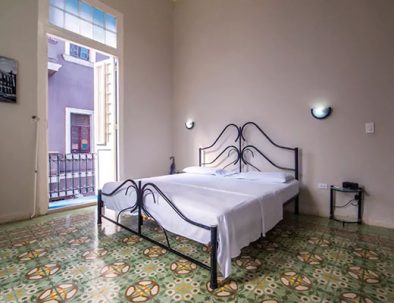
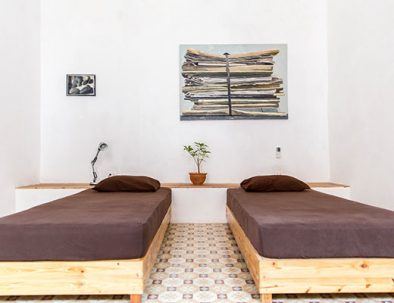
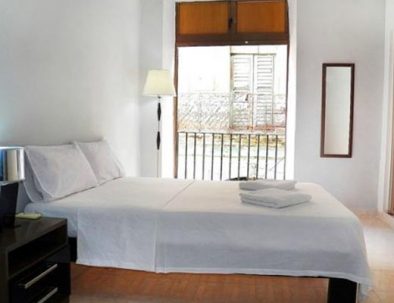
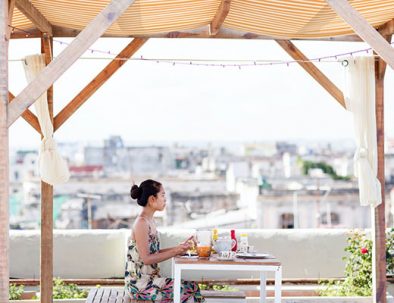

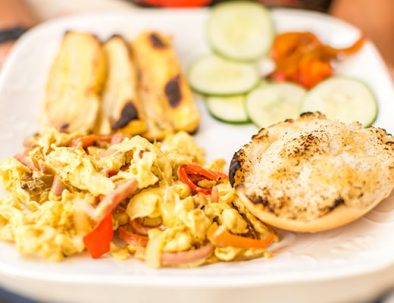

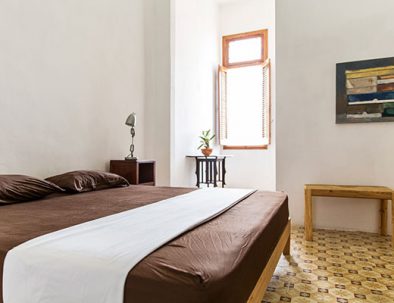
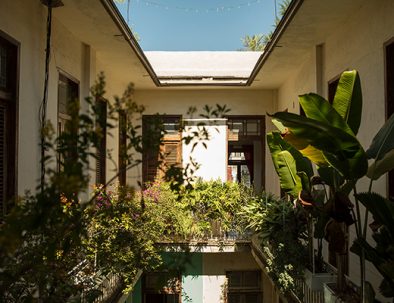
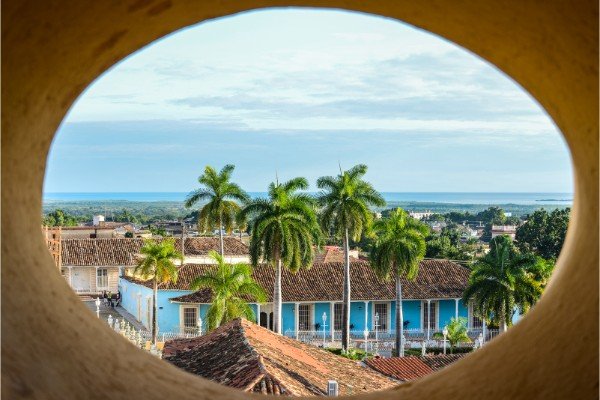
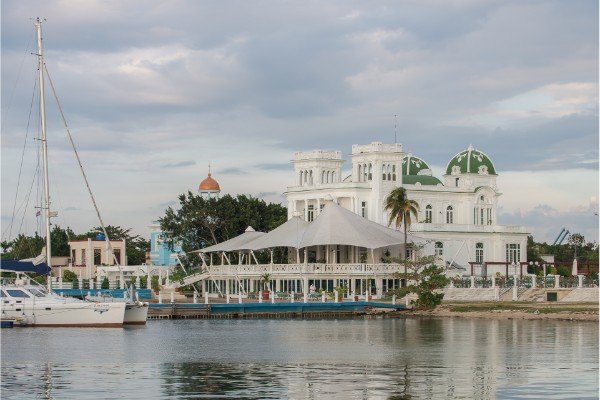

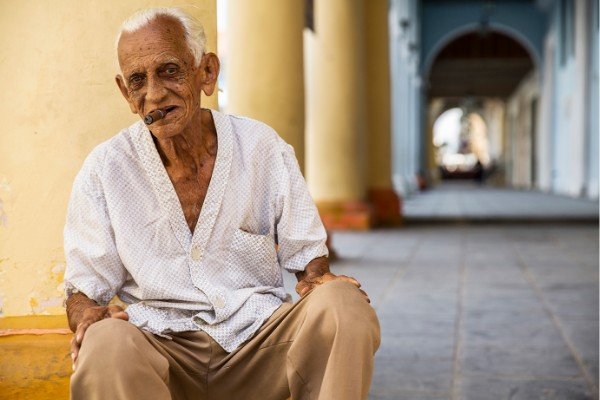
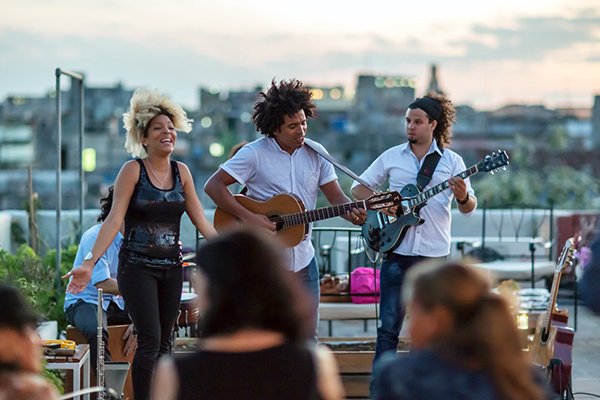

Take a look at our Instagram page where we feature the best travel pictures
and behind the scenes photos taken by the Locally Sourced Team.